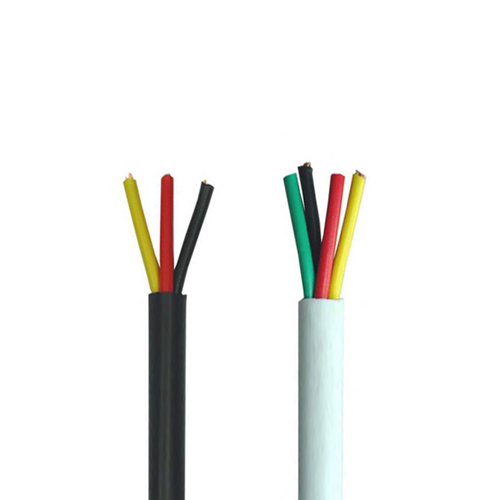Power Cable Structure (1)
Cross-linked cables generally consist of conductors, insulating layers and jackets.
1. Wire
A conductor is an object that can conduct current, also known as a conductor core. The material used as the conductor of the wire and cable should have good electrical conductivity, that is, the resistance should be small to reduce the current loss on the line. The loss is directly related to the magnitude of the current and resistance, and is manifested in the heating of the conductor.
Cables use conductors to conduct current, so the specifications for wires and cables are represented by the cross section of the conductor.
The conductors of the
power cable can be made as a whole or stranded with multiple conductors, and the shape can be circular or fan-shaped. There are two types of stranded wire cores: non-compact cores and compacted cores. The conductor cores of XLPE cables are usually stranded, and 1kV XLPE cables are usually fan-shaped, semi-circular and circular. Cross-linked cables above 6kV use round compact core wires.
2. Round conductor core
The twist arrangement of the round conductor cores is generally in the form of "regular twist". The twisting principle is as follows:
(1) The center is generally a single line, the layer is six single lines, and the back of each layer is six more than the inner layer, and the diameter of the single lines is the same.
(2) The twisting direction of each layer of wires should be opposite to the previous layer, and the outer layer should be twisted to the left. This structure can ensure the stability and flexibility of the cable conductor core.
3. Scalloped and semi-circular conductor cores
The ideal sector and asymmetric conductor shape is a semicircle. Therefore, it is very important to consider flexural stability when designing a multi-core arrangement. In order to have sufficient curvature and stability for the non-compact sector core, the following rules are followed when designing the non-compact sector core
(1) The center wire of the conventional sector iron core is located on the center line of the sector iron core, otherwise, when the iron core is bent, the upper conductor of the center line will be stretched, and the lower conductor will be squeezed, causing sector damage. , damage the insulation.
(2) The diameter of the conductor on the centerline of the sector core is generally larger. The conductors on either side of the scalloped core shall be able to slide along the conductors on the centerline without changing the shape of the scalloped core. This rule is called the mobile sliding rule. Otherwise, the scallops and insulation edges may be damaged when the scallops are twisted into a cable

